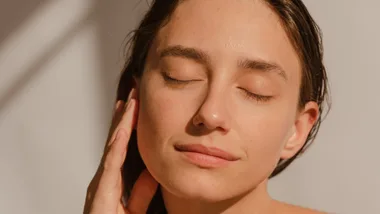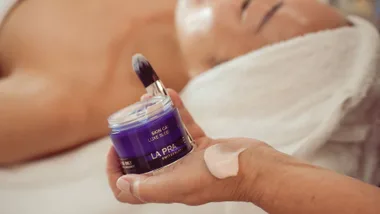Just about everyone, at every age, wants healthy, glowing skin. It’s a big part of the beauty industry (and our daily routines). Dermabrasion and microdermabrasion are two professional treatments you might consider if you want long-lasting results.
Despite similarities in the names, there’s a big difference between dermabrasion and microdermabrasion – including the procedure, healing time and costs.
So, marie claire Australia spoke to specialist plastic surgeon Dr Naveen Somia to find out more.
What’s the difference between dermabrasion and microdermabrasion?
“Both dermabrasion and microdermabrasion are skin resurfacing methods that exfoliate the skin,” Dr Somia explained.
“While microdermabrasion exfoliates only the top layer, dermabrasion is invasive as it exfoliates deeper layers of the skin and is used to treat deep wrinkles and scars.”
Put another way, dermabrasion is a more intensive procedure that could be considered for more extreme changes to your skin, while microdermabrasion can help with more subtle improvements.
Dr Somia added that people should consider the process and time involved for each treatment before making any decisions.
“Dermabrasion needs anaesthesia, is painful and has a longer downtime. Microdermabrasion needs no anaesthesia, there is minimal discomfort and virtually no downtime.”

How much does dermabrasion cost?
The cost of dermabrasion varies a lot but you could typically expect to pay anywhere from $500 to $4,000 or more in Australia. In comparison, microdermabrasion prices can be around $70 to $300 depending on the clinic and scope of treatment.
The reason dermabrasion costs are higher (and more varied) comes down to how much more is involved in the surgery. According to the Australian Society of Plastic Surgeons, the experience of the surgeon, their fees, anaesthesia, hospital or surgical facility costs, medication prescriptions and any medical testing that’s required are some of the biggest factors that influence the cost.
How common is dermabrasion in Australia?
While you can find beauty products that use variations of the term ‘dermabrasion’, the clinical procedure is not that common these days. This is partly due to the actual surgery involved, as well as the recovery process, risks, costs and more recent innovations.
“Over the last 10 years major advances in skin resurfacing technologies have ensured that these newer skin resurfacing treatments are now preferred by patients due to less downtime and a better safety profile,” Dr Somia said.
He added that many of the newer alternatives also have the benefit of “influencers, celebrity endorsements that promotes public awareness and acceptance”.
Microdermabrasion is a good example of this, with celebrities including Jennifer Lawrence, Naomi Campbell and Naomi Watts among those reported to have had this treatment.

Who might consider dermabrasion?
People who want to reduce the appearance of scars or deep wrinkles might consider dermabrasion, but it is at the extreme end of the scale.
As Dr Somia explained, “dermabrasion is an aggressive skin resurfacing procedure achieved using a rough rotating abrading device to mechanically exfoliate deeper layers of skin.”
If you are interested in getting dermabrasion, it’s important to find a qualified, experienced specialist so you can discuss your options.
“Dermabrasion is an invasive procedure and just like any invasive surgical procedures, choosing the right practitioner is the key,” Dr Somia said.
“It is equally important for prospective patients to consider their expectations regarding the results and any potential risks or side effects of dermabrasion in the context of their skin type and skin condition.”
So if you do sit down with a specialist, ask them lots of questions before you make your final decision. This can include questions about the costs, how your skin might react, healing time and alternatives.
What are some alternatives for your skin?
Let’s start with the obvious: Microdermabrasion is much more common, and less invasive, than dermabrasion.
You still need to find a qualified and experienced professional for the treatment, but our research found that there are many clinics that offer microdermabrasion packages.
When you find one, it’s a good idea to book an initial consult so you can discuss what you want to achieve. This will help you decide if microdermabrasion is right, and an experienced professional can also offer other alternatives.
You could also consider some at-home facial products. These options will be less intensive than dermabrasion or microdermabrasion, but can give you an idea of the results you’ll get on your own.
They’re also a bit more budget-friendly, with different products at different prices.
Just remember not to be too hard on your skin. It can take a while to notice changes, and sometimes less really is more.










